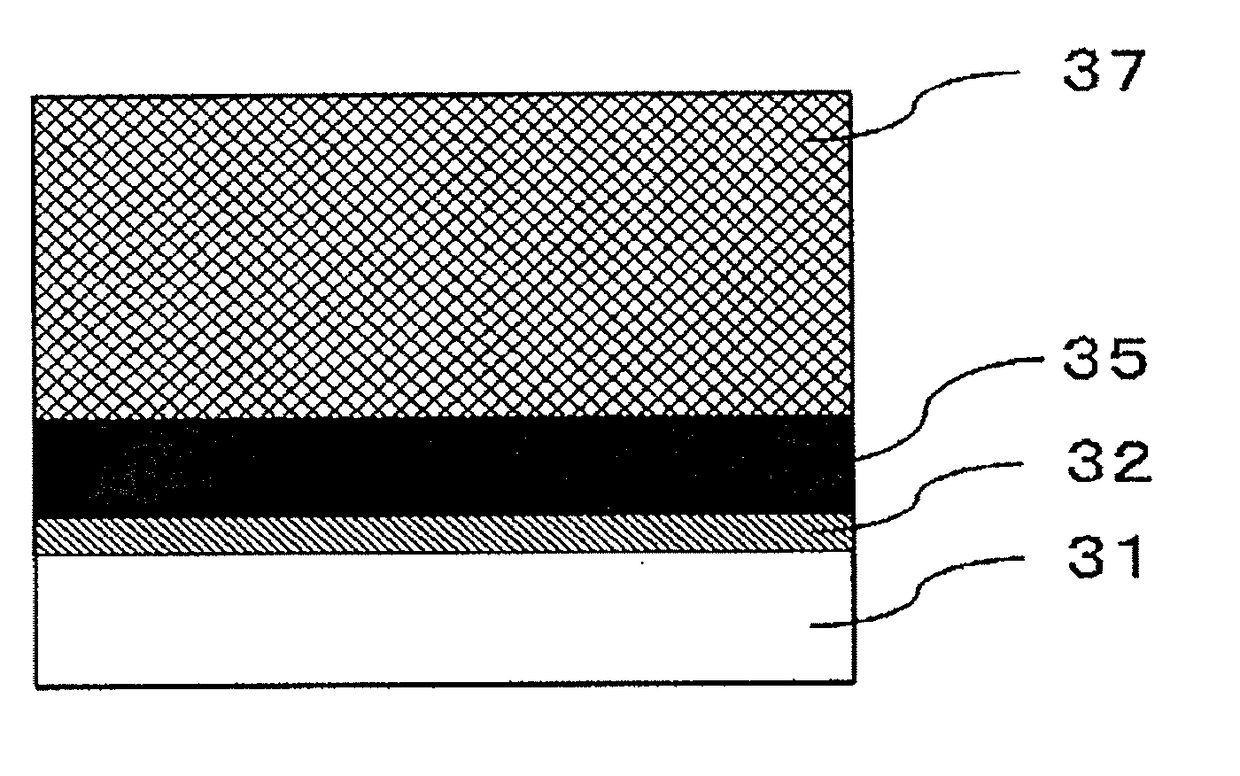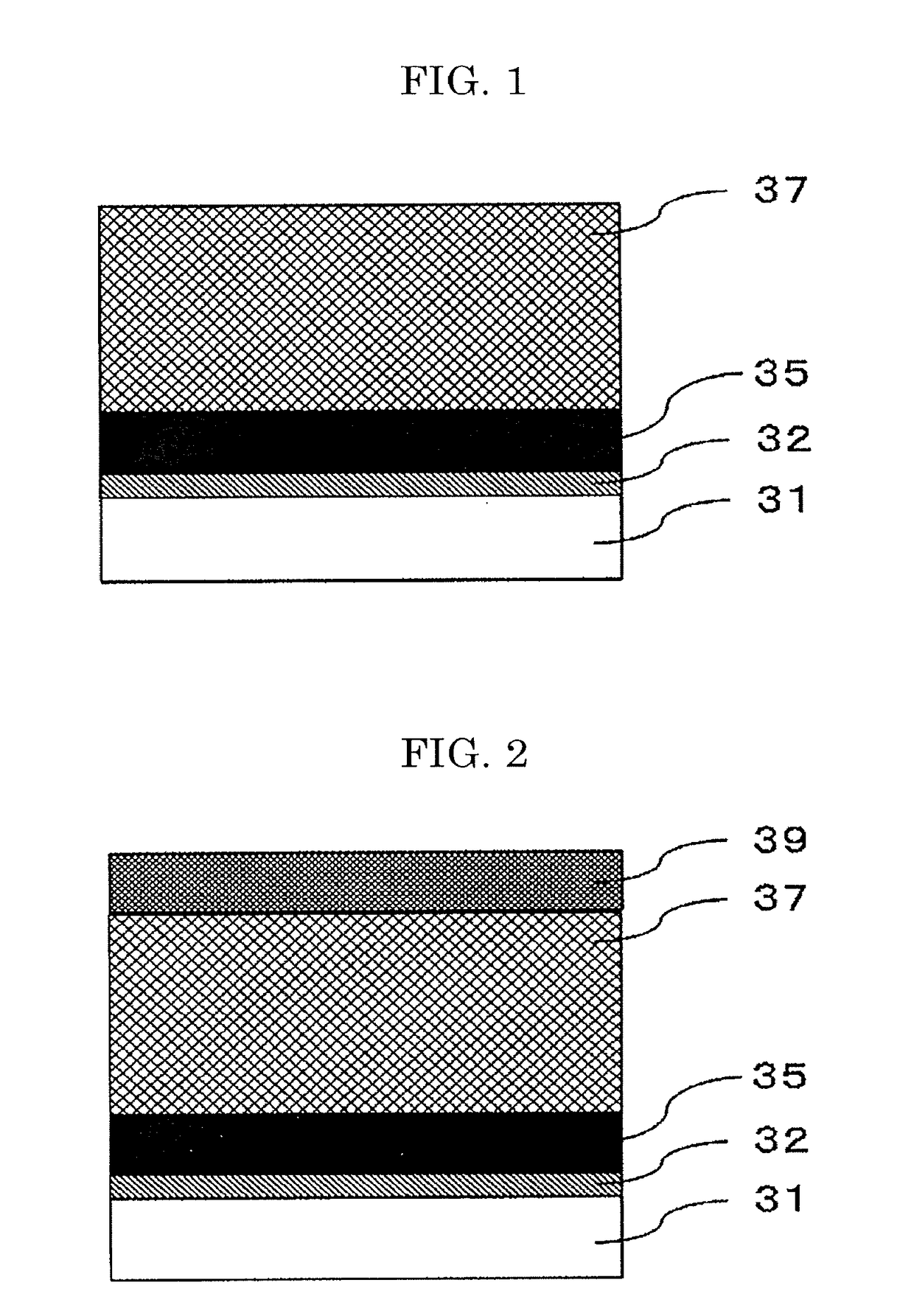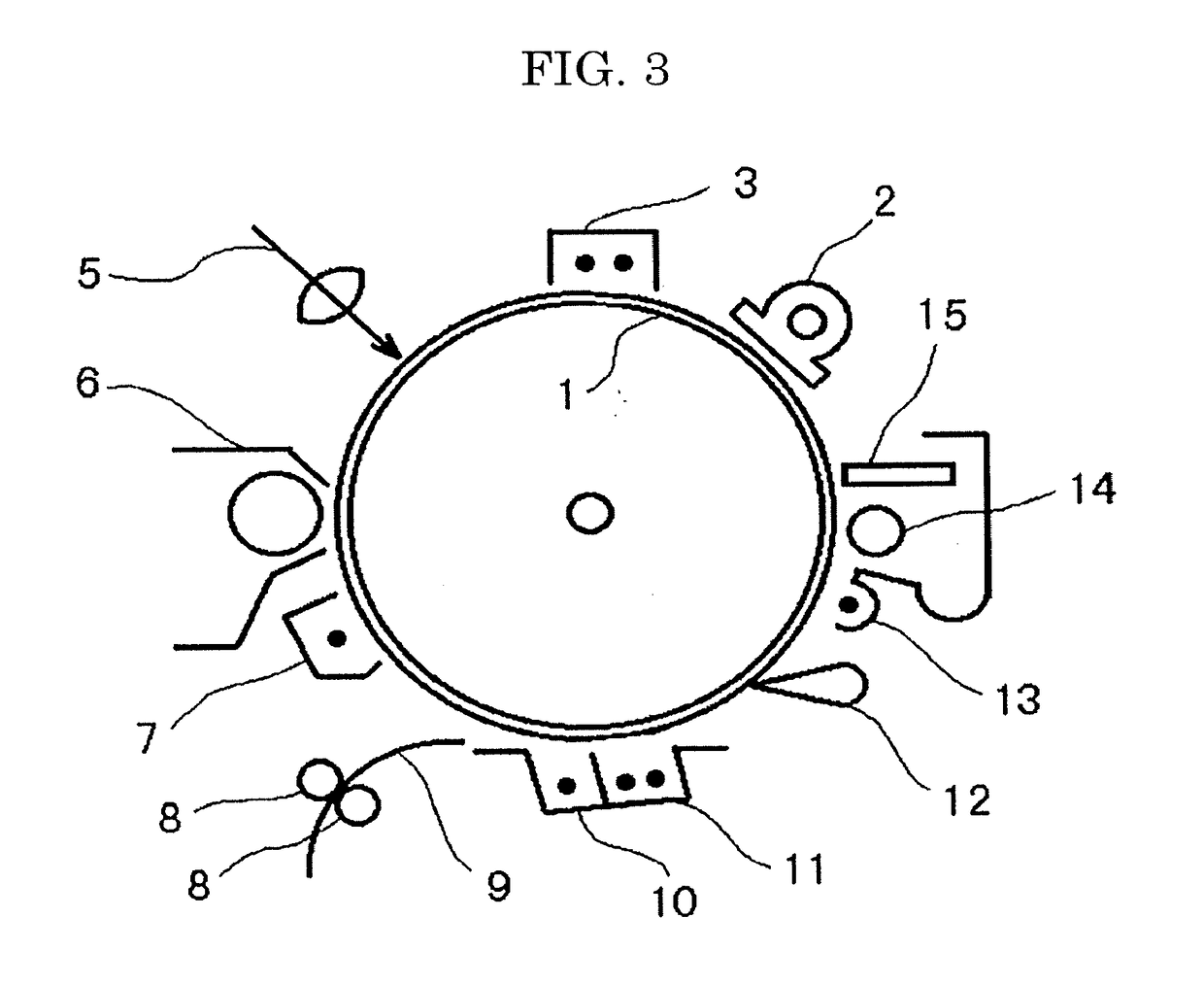Photoconductor, image forming apparatus, and process cartridge
- Summary
- Abstract
- Description
- Claims
- Application Information
AI Technical Summary
Benefits of technology
Problems solved by technology
Method used
Image
Examples
first embodiment
[0135]A layer configuration of the photoconductor according to a first embodiment will be described with reference to FIG. 1.
[0136]FIG. 1 illustrates a structure including a laminate photoconductive layer, and illustrates a layer configuration of the photoconductor where an undercoat layer 32, a charge-generating layer 35, and a charge-transporting layer 37 are sequentially disposed on a conductive support 31. Note that, a combination of the charge-generating layer 35 and the charge-transporting layer 37 corresponds to a photoconductive layer.
second embodiment
[0137]A layer configuration of the photoconductor according to a second embodiment will be described with reference to FIG. 2.
[0138]FIG. 2 illustrates a structure including a laminate photoconductive layer, and illustrates a layer configuration of the photoconductor where an undercoat layer 32, a charge-generating layer 35, a charge-transporting layer 37, and a protective layer 39 are sequentially disposed on a conductive support 31. Note that, a combination of the charge-generating layer 35 and the charge-transporting layer 37 corresponds to a photoconductive layer.
(Image Forming Apparatus)
[0139]An image forming apparatus of the present disclosure includes at least a photoconductor, a charging unit configured to charge a surface of the photoconductor, an exposing unit configured to expose the surface charged of the photoconductor to light to form an electrostatic latent image, a developing unit configured to develop the electrostatic latent image with a toner to form a visible imag...
example 1
[0185]After applying Undercoat-Layer Coating Liquid A-1 onto an aluminium cylinder (diameter: 100 mm, length: 380 mm) through dip coating, the applied coating liquid was dried for 30 minutes at 170° C., to form an undercoat layer having an average film thickness of 5 μm disposed on the aluminium cylinder. Next, Charge-Generating-Layer Coating Liquid B-1 was applied by dip coating followed by drying for 30 minutes at 90° C., to form a charge-generating layer having an average film thickness of 0.2 μm disposed on the undercoat layer. Moreover, Charge-Transporting-Layer Coating Liquid C was applied by dip coating, followed by performing drying for 30 minutes at 150° C., to thereby form a charge-transporting layer having an average film thickness of 25 μm disposed on the charge-generating layer. In the manner as described, Photoconductor 1 of Example 1 was produced.
PUM
| Property | Measurement | Unit |
|---|---|---|
| Thickness | aaaaa | aaaaa |
| Thickness | aaaaa | aaaaa |
| Thickness | aaaaa | aaaaa |
Abstract
Description
Claims
Application Information
 Login to View More
Login to View More - R&D
- Intellectual Property
- Life Sciences
- Materials
- Tech Scout
- Unparalleled Data Quality
- Higher Quality Content
- 60% Fewer Hallucinations
Browse by: Latest US Patents, China's latest patents, Technical Efficacy Thesaurus, Application Domain, Technology Topic, Popular Technical Reports.
© 2025 PatSnap. All rights reserved.Legal|Privacy policy|Modern Slavery Act Transparency Statement|Sitemap|About US| Contact US: help@patsnap.com



